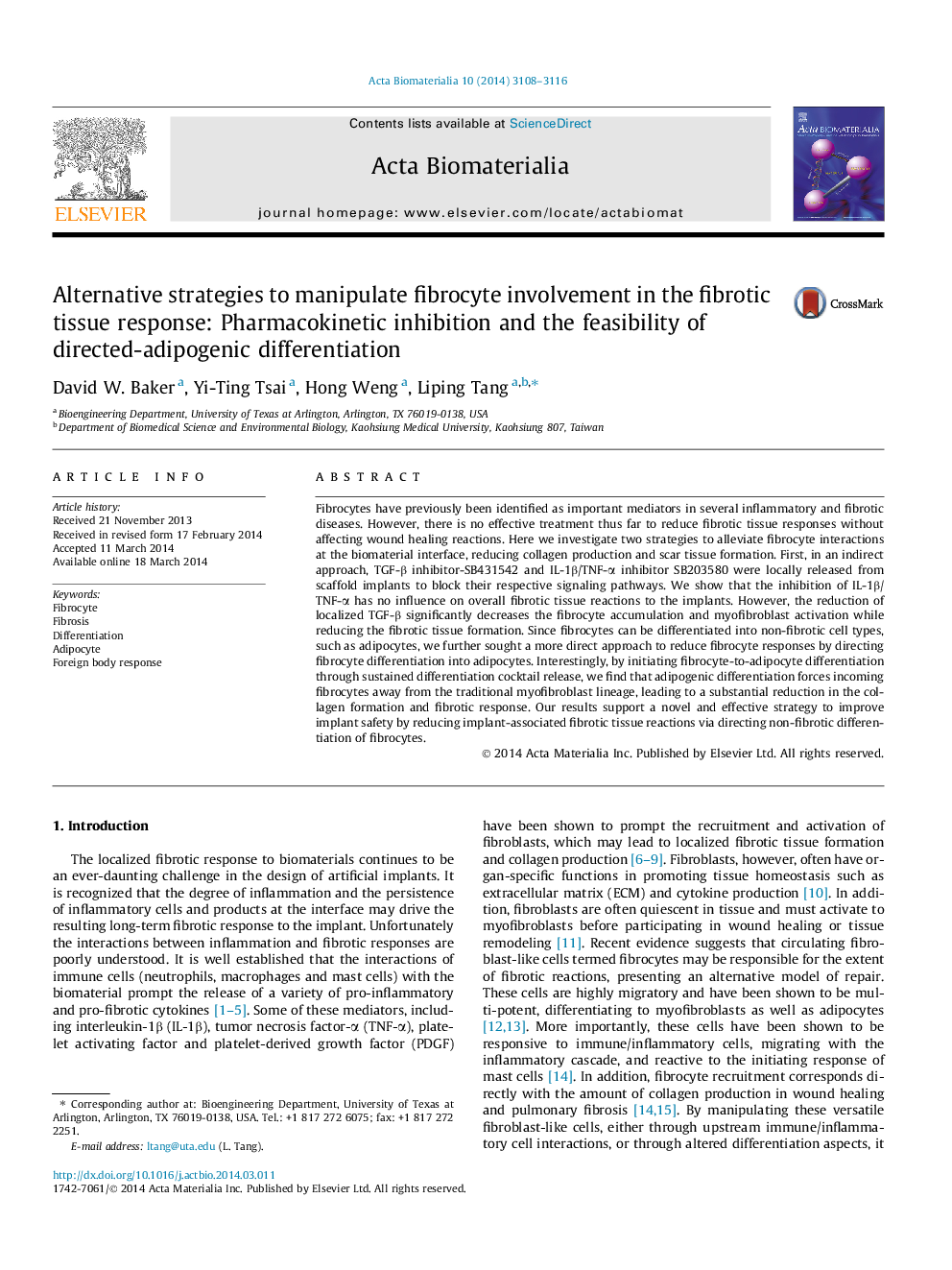| کد مقاله | کد نشریه | سال انتشار | مقاله انگلیسی | نسخه تمام متن |
|---|---|---|---|---|
| 420 | 42 | 2014 | 9 صفحه PDF | دانلود رایگان |
Fibrocytes have previously been identified as important mediators in several inflammatory and fibrotic diseases. However, there is no effective treatment thus far to reduce fibrotic tissue responses without affecting wound healing reactions. Here we investigate two strategies to alleviate fibrocyte interactions at the biomaterial interface, reducing collagen production and scar tissue formation. First, in an indirect approach, TGF-β inhibitor-SB431542 and IL-1β/TNF-α inhibitor SB203580 were locally released from scaffold implants to block their respective signaling pathways. We show that the inhibition of IL-1β/TNF-α has no influence on overall fibrotic tissue reactions to the implants. However, the reduction of localized TGF-β significantly decreases the fibrocyte accumulation and myofibroblast activation while reducing the fibrotic tissue formation. Since fibrocytes can be differentiated into non-fibrotic cell types, such as adipocytes, we further sought a more direct approach to reduce fibrocyte responses by directing fibrocyte differentiation into adipocytes. Interestingly, by initiating fibrocyte-to-adipocyte differentiation through sustained differentiation cocktail release, we find that adipogenic differentiation forces incoming fibrocytes away from the traditional myofibroblast lineage, leading to a substantial reduction in the collagen formation and fibrotic response. Our results support a novel and effective strategy to improve implant safety by reducing implant-associated fibrotic tissue reactions via directing non-fibrotic differentiation of fibrocytes.
Figure optionsDownload high-quality image (176 K)Download as PowerPoint slide
Journal: Acta Biomaterialia - Volume 10, Issue 7, July 2014, Pages 3108–3116
